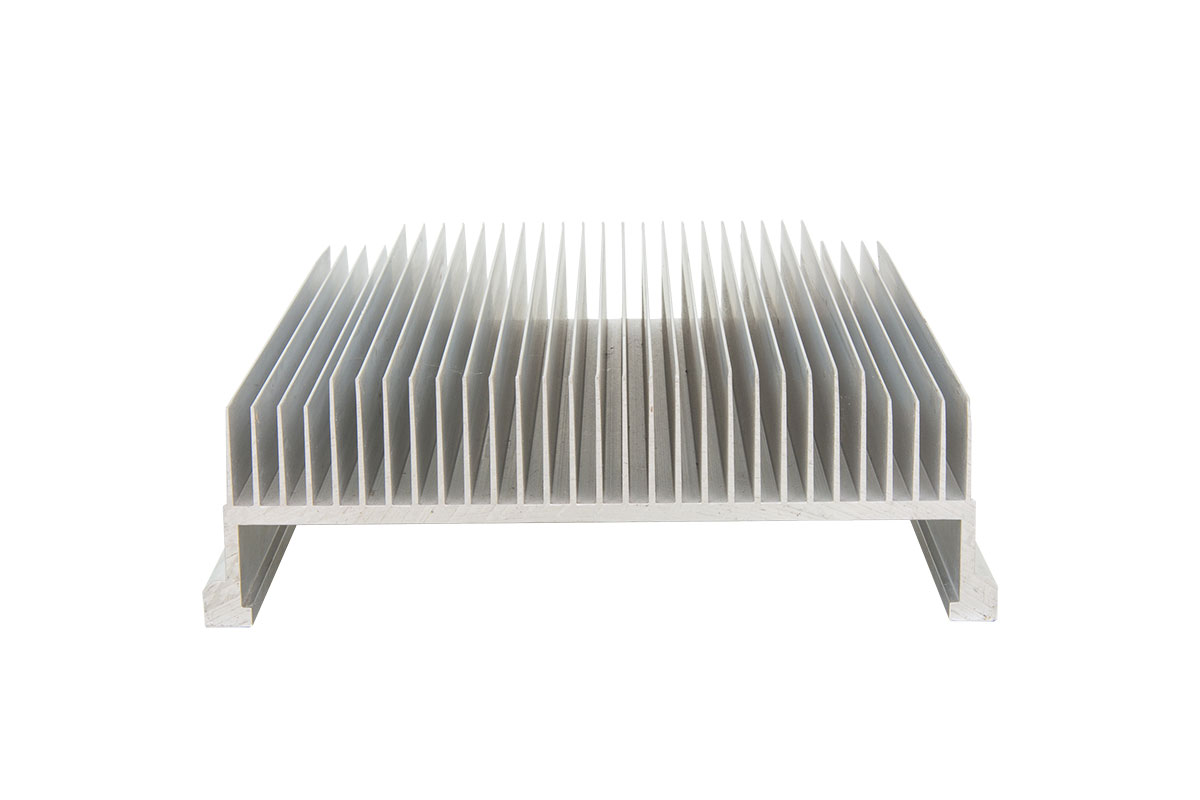
Older vehicles typically have brass and copper radiators, and aluminum radiators are a great improvement. An aluminum radiator might be worthwhile if you have a damaged radiator or want to increase your engine's power.
Compared to typical copper and brass choices, aluminum radiators have many advantages. Lighten your radiator by switching to aluminum while enhancing its lifespan, performance, and aesthetic appeal.

Aluminum can create pipes and fins that are much thinner than brass or copper and are more robust. Aluminum radiators transmit heat more efficiently, while copper does it more rapidly. Because aluminum is lightweight, an aluminum radiator will result in thinner fins and pipes, as well as the ability to expand the radiator's size to accommodate more fans and cores without adding any additional weight to your system.
Made of extruded aluminum profiles, an aluminum radiator can cool your engine more effectively and quickly, whether you're thinking about boosting your engine for better performance or want assurance from a highly constructed cooling system.
OEM radiators frequently combine metal and plastic parts. As a result, the system develops weak spots that could someday fail. It is usually preferable to replace these systems with all-aluminum radiators rather than repair them. These systems are made to last for ten years or more, and their design eliminates any potential weak points.
Compared to an old brass and copper radiator, a contemporary aluminum radiator is a far more dependable solution. If you frequently experience radiator issues, switching to an aluminum radiator will solve your issues.
Weight savings is one of the most compelling advantages of switching to a radiator built of solid aluminum. Although older radiators, often composed of brass and copper alloy, do an excellent job of transferring heat, they are substantially heavier than aluminum.
By switching to aluminum, you may either reduce the weight of your car or add a bigger radiator and benefit from improved cooling while keeping the weight constant.
You can increase your car's speed and fuel economy by reducing weight. Even if weight reduction isn't important to you, increasing your radiator's size without accelerating your vehicle more slowly is convenient. You can accomplish that using aluminum.
Older radiators rust and frequently cause increased pollution in your car's cooling system. You risk creating harmful sediment in your cooling system if your old radiator wears down where the coolant circulates.
Occasionally, draining the system is sufficient to eliminate this sludge buildup. Still, a rusty radiator will produce fresh sludge over time, affecting how well your cooling system functions in the future. It's advisable to replace an old, severely corroded radiator with a new aluminum type that won't compromise your cooling system.
The aesthetic value that aluminum radiators add to your vehicle should not be overlooked as a final bonus. A straightforward modification is switching to an aluminum radiator if you wish to have a cooling system that looks more aesthetically pleasing. Aluminum radiators with flat tops have a high-quality, minimalistic style that makes your engine compartment look cleaner and more contemporary.
Before selecting one of the numerous aluminum radiators, it's critical to understand the various types and which are appropriate for your individual needs. There are downflow and crossflow units and multi and single-pass aluminum radiators.
The number of times the coolant tubes cross the core as they move from the inflow tube to the outflow determines whether a radiator is a single- or multi-pass product. Coolant in single-pass radiators passes past the core just once before exiting and returning to the engine.
In triple-pass or double-pass radiators, the coolant pipes wind around the radiator in several columns before snaking back the other way to the output pipe. The cooling efficiency of a radiator increases by between 5 - 10% for double-pass systems and between 10 - 20% for triple-pass systems when coolant is kept exposed to the cores for an extended time.
Most radiators have a downflow or crossflow design. Downflow radiators feature an entrance pipe at the top from which coolant drains through tubes to the bottom outflow. Downflow radiators frequently have a tall, narrow shape.
Inlets and outlets are located on opposite sides of crossflow radiators. The coolant tubes are typically short and wide in size and run horizontally between the intake and output pipes. Radiators usually need to be changed after 8 to 10 years.
If your radiator needs to be replaced, it can be better to swap it out for a new aluminum type. If you're improving your engine, you'll also require a stronger radiator to cool things. Before you decide whether the improvement is worthwhile, consider all of these aspects and the upgrade's cost.
Shishan Production Base
Nonferrous Metal Industrial Park, Xiaotang, Shishan Town, Nanhai District, Foshan City, Guangdong Province
Gaobian production base
Gaobian Zhangbian Industrial Zone, Dali Guangyun Road, Nanhai District, Foshan City, Guangdong Province
Company summary: + 86-757-85558828
Fax: + 86-757-85550238